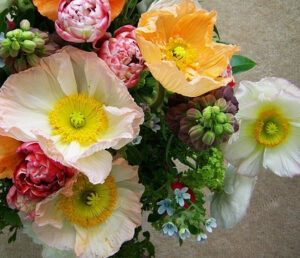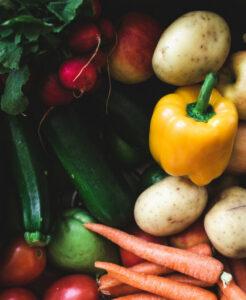
Greenhouses are becoming more popular as people realize how much cheaper it is to grow their own food. 
Garden enthusiasts have long enjoyed greenhouses since they prefer growing annuals and perennials from seed. Seeds provide a wider choice of varieties and vegetables grown from seed taste better. Basic greenhouse kits start at $300 and can cost thousands. That $50 greenhouse may seem like a good deal until it blows away in the first storm. Unless you have a well-protected area, buy the best greenhouse you can afford, especially if you live in zones 4 and 5. In these zones, it is probably best to buy a greenhouse with double-walled polycarbonate panels. In addition, an electric fan can be used to blow air between the walls which acts as another layer of insulation. These fans do not use much electricity and are much cheaper than portable electric or propane heaters. In zones 6-8 a single 6-8 mm thick polycarbonate panel may be ok but check with the manufacturer to be sure. A heat-sensitive automatic roof vent is necessary since heat buildup on a sunny day can overheat plants. Also, plants need air circulation to prevent the growth of mold and fungi. On really cold nights, horticultural fleece or bubble wrap can be used to cover seedlings, pots, and floors.
Annuals
There is some controversy about whether heated mats are necessary for seed germination. At the very least, heating mats do speed up germination and are fairly cheap. Solar-powered grow lights are also useful for germination. The following list includes annuals that are easy to grow from seeds. Seeds should be started about 6 weeks before the last frost. Portulaca grandiflora (Moss rose), Lobularia maritima (Alyssum), Celosia argenta, Cosmos sulphureus, Impatiens walleriana, Tagetes patula (Marigolds), Ipomoea purpurea (Morning glory), Cleome hasslariana, Tropaeolum majus (Nasturtium), Helianthus annuus (Sunflowers), Zinnia ssp, Coleus ssp., Petunia ssp., and Centaurea cyanus (Bachelor buttons)
Perennials
The following list includes easy-germinating perennials. Rudbeckia (Black-eyed Susan), Nepeta (Catmint), Perennial Geraniums, Centhranthus, Aster, Echinacea (Purple cone flower), Armeria, Cerastium (Snow in summer), and Achillea (Yarrow).
Vegetables
Many vegetables can be grown in winter, The following list can be started in peat pots or raised beds on heat mats. Arugula, Spinach, Cauliflower, Cabbage, Kale, Collard greens, Broccoli, Brussel sprouts, Celery, Peas, Onions, Green onions, Shallots, Garlic, Parsnips, Carrots, Beets, Potatoes, and Radishes. Microgreens and sprouts are very young plants and can be harvested in 10-14 days. However, Tomatoes and Peppers need a lot of heat and may have to wait until spring to germinate.
Conclusion
With so many wonderful varieties of seeds to choose from, it is easy to get carried away. However, be careful, if you are a beginner at seed growing. Some seeds are very difficult to germinate and require special treatments. The lists above include only easy-to-germinate seeds. Always read directions before purchasing any seed packets. Have fun and enjoy!